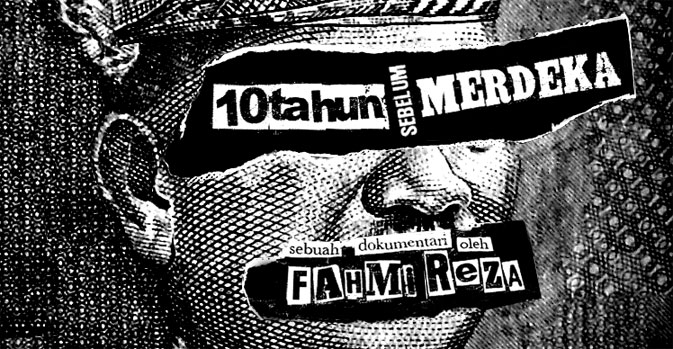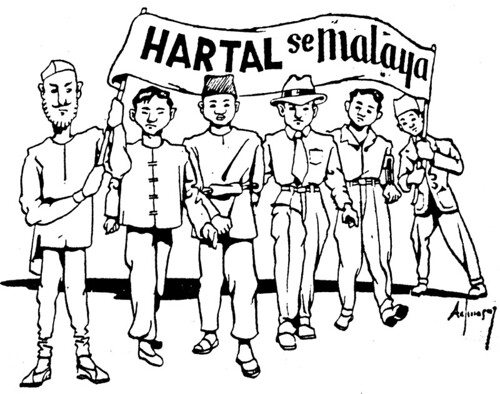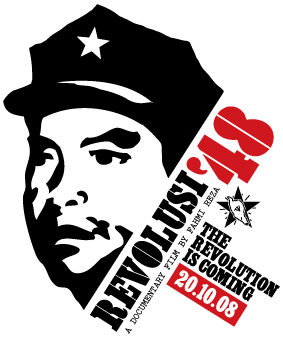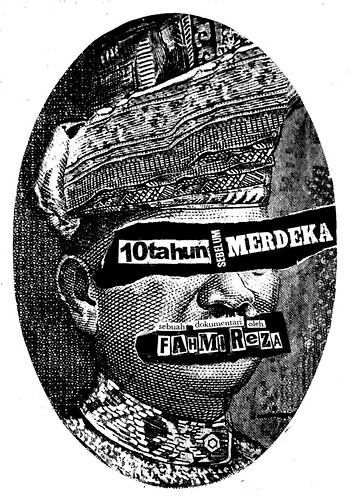Cinema: The years before Merdeka
by R. Zeeneeshri
In 1947, Malaya and Singapore witnessed the first political action that united all the races - the hartal. R. ZEENEESHRI speaks to a new filmmaker who revisits this turbulent era.
THE years before Merdeka, a post-war era of struggle in identity, may be foggy in the minds of most of us. "What we know comes from history books, with no form of understanding, just memorising facts," says Fahmi Reza, 30.
"Those years, some feel, are best left forgotten, overshadowed and ignored, he says. See a trailer of his documentary, Sepuluh Tahun Sebelum Merdeka, at www.10tahun.blogspot.com
"It's not just about that single moment when Tunku Abdul Rahman shouted 'Merdeka' seven times. It's not about that gist of hope that some admired from a distance, no matter how ideal and historical that moment was."
The fight for independence was a most complicated process, clashing different elements or ideas that led to the creation of a modern nation. Many tales have slipped under the radar, especially one such as the hartal.
Hartal is a mass protest that involved a total shutdown of workplaces, offices and shops. It is a mode of appealing to the sympathies of a government to change an unpopular or unacceptable decision. Some call it a period of dissolution, when the British paid no attention to what was clearly a cry from the people.
Fahmi is documenting these unforgotten tales, people and visions. A winner of the Freedom FilmFest 07 (as part of its 50th Merdeka: The Untold Human Rights Story theme), Fahmi received a RM5,000 grant to make the film.
His 35-minute visual compiles events leading to the hartal, mainly the realisation of an independent Malaya and the publication of a People's Constitution drafted by Putera-AMJCA (Pusat Tenaga Rakyat-All Malayan Council of Joint Action), an alternative constitution to challenge the Federation Constitution.
"I became interested in memoirs and stumbled on works by a left-wing member. Their struggle excited me. When I heard of the festival, I put in my proposal and won. I bought a camera and laptop and taught myself to make a film," he says.
He did research and travelled to talk to octogenarians about events that existed then. Most of the grant money went to transportation, food and accommodation. "But it was all worth it, as not much attention was paid to the late 1940s. These exciting years laid the groundwork for our independence."
"After the Japanese Occupation, the people began to think beyond, looking at Indonesia, where President Sukarno fought for and won independence. They began to think of freedom, a right to own one's land. And that's when the political front began to grow."
Putera-AMJCA was formed, an alliance of Malay nationalist groups, front parties of the Communist Party of Malaya, trade unions, the fledgling MIC and future MCA leader Tun Tan Cheng Lock. "Looking back at the proposed constitution for a secular, multi-racial nation, I'm surprised at how progressive the thinking was then."
Fahmi says it pushed for equal citizenship rights for all who considered Malaya their home, regardless of race or place of birth. Another example of progressive thinking then was the provision for a Council of Races comprising two representatives of every race, including minorities, to ensure laws did not discriminate.
Given that 60 years have passed and most of those involved have died, Fahmi managed to interview a number of veterans of the Putera-AMJCA coalition.
He tapped the memories of Lim Kean Chye, founder member of the Malayan Democratic Union, Hashim Said, division head of Angkatan Pemuda Insaf (API), Majid Salleh, a labour leader and member of Partai Kebangsaan Melayu Malaya (PKMM) and Zainuddin Andika and Yahya Nassim, both PKMM members. Lim and Yahya are both 88 while the others are not much younger.
"It was hard to find them, to talk to them and gain their trust. Many don't like to talk about that time because it brings up unhappy memories and dashed hopes. And while it's true that after many years, people are vague about details, I felt it was very important that we talked to people who were actually there."
Fahmi supplemented his interviews with documents from the National Archives and looked up newspapers of the time, like the Straits Echo, Malay Tribune, Utusan and Straits Times.
Fahmi realises that revisiting the past can often re-open old wounds. "But there is nothing controversial about this documentary. It is the truth. All this information is out there, in texts, in memoirs. The only reason I made it on film was because we now live in a visual-generation."
Sumber: New Sunday Times, 16 Sept 2007, Sunday People.
Ahad, September 16, 2007
Artikel dalam akhbar New Sunday Times, 16 Sept 2007
Dicatat oleh
Fahmi Reza
di
10:58 PG
![]()
Kategori: Liputan Media
Langgan:
Catat Ulasan (Atom)








Tiada ulasan:
Catat Ulasan